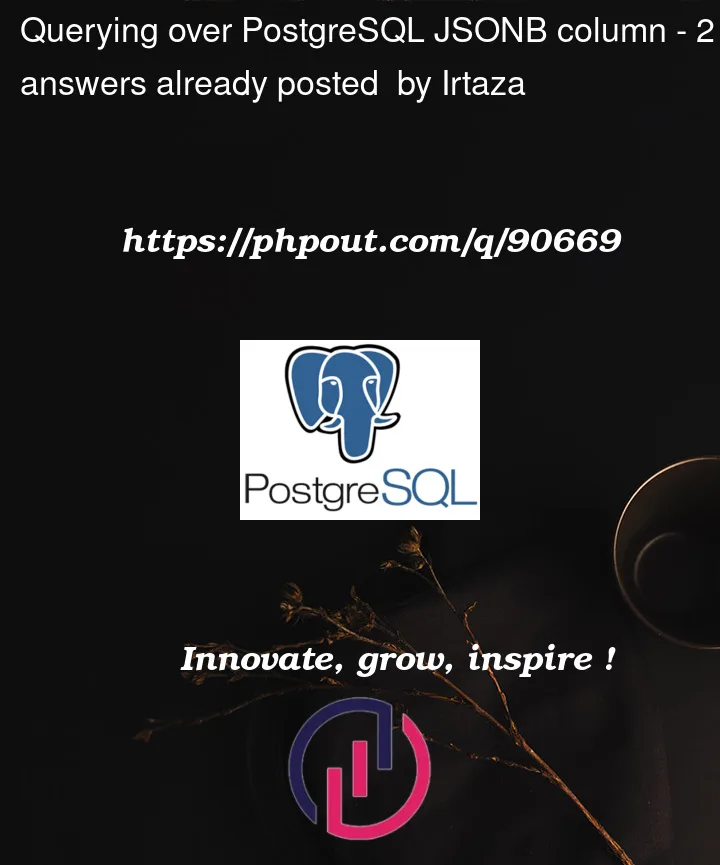I have a table "blobs" with a column "metadata" in jsonb data-type,
Example:
{
"total_count": 2,
"items": [
{
"name": "somename",
"metadata": {
"metas": [
{
"id": "11258",
"score": 6.1,
"status": "active",
"published_at": "2019-04-20T00:29:00",
"nvd_modified_at": "2022-04-06T18:07:00"
},
{
"id": "9251",
"score": 5.1,
"status": "active",
"published_at": "2018-01-18T23:29:00",
"nvd_modified_at": "2021-01-08T12:15:00"
}
]
}
]
}
I want to identify statuses in the "metas" array that match with certain, given strings. I have tried the following so far but without results:
SELECT * FROM blobs
WHERE metadata is not null AND
(
SELECT count(*) FROM jsonb_array_elements(metadata->'metas') AS cn
WHERE cn->>'status' IN ('active','reported')
) > 0;
It would also be sufficient if I could compare the string with "status" in the first array object.
I am using PostgreSQL 9.6.24




2
Answers
for some clarity I usually break code into series of WITH statements. My idea for your problem would be to use json path (https://www.postgresql.org/docs/12/functions-json.html#FUNCTIONS-SQLJSON-PATH) and function jsonb_path_query.
Below code gives a list of counts, I will leave the rest to you, to get final data.
I’ve added ID column just to have something to join on. Otherwise join on metadata.
Also, note additional " in where condition. Left join in blob_ext is there just to have null value if metadata is not present or that path does not work.
A way is to peel one layer at a time with
jsonb_extract_path()andjsonb_array_elements():